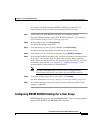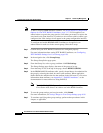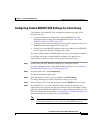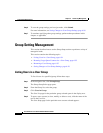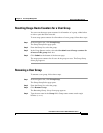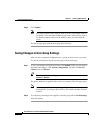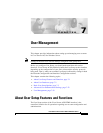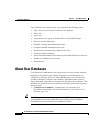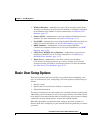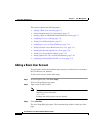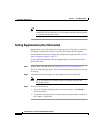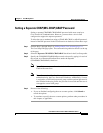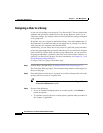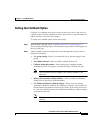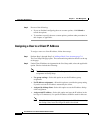
7-3
User Guide for Cisco Secure ACS for Windows Server
78-16592-01
Chapter 7 User Management
Basic User Setup Options
• Windows Database—Authenticates a user with an existing account in the
Windows user database located in the local domain or in domains configured
in the Windows user database. For more information, see Windows User
Database, page 13-7.
• Generic LDAP—Authenticates a user from a Generic LDAP external user
database. For more information, see Generic LDAP, page 13-32.
• Novell NDS—Authenticates a user using Novell NetWare Directory Services
(NDS). For more information, see Novell NDS Database, page 13-49.
• ODBC Database—Authenticates a user from an Open Database
Connectivity-compliant database server. For more information, see ODBC
Database, page 13-55.
• LEAP Proxy RADIUS Server Database—Authenticates a user from an
LEAP Proxy RADIUS server. For more information, see LEAP Proxy
RADIUS Server Database, page 13-75.
• Token Server—Authenticates a user from a token server database.
Cisco Secure ACS supports the use of a variety of token servers for the
increased security provided by one-time passwords. For more information,
see Token Server User Databases, page 13-78
Basic User Setup Options
This section presents the basic activities you perform when configuring a new
user. At its most basic level, configuring a new user requires only three steps, as
follows:
• Specify a name.
• Specify either an external user database or a password.
• Submit the information.
The steps for editing user account settings are essentially identical to those used
when adding a user account but, to edit, you navigate directly to the field or fields
to be changed. You cannot edit the name associated with a user account; to change
a username you must delete the user account and establish another.
What other procedures you perform when setting up new user accounts is a
function both of the complexity of your network and of the granularity of control
you desire.



